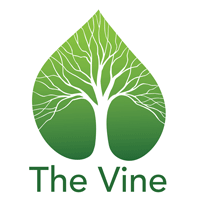Our series in the Hebrew Feasts gives us an appreciation for what God has done and a powerful hope for the future. Throughout the Old Testament, Israel observed these appointed days while they looked forward to the arrival of the Messiah.
The seventh and final feast is a holy day known as the Feast of Tabernacles or Booths (Sukkot). Historically, this is a memorial to Israel's time living in simple shelters in the wilderness after escaping from Egypt. It is also a prophetic picture of God’s millennial (1000 year) kingdom where Jesus will dwell with his people and rule in righteousness.
Key Points:
- God has a plan, and he is faithful to fulfill his promises at his appointed times
- Only Jesus will be the perfect ruler who will establish a perfect government
- God does not need our help to prepare or establish HIS kingdom
- Our role is to obey the Lord, grow as believers and impact the world by loving people and telling them about the good news and the hope we have in Jesus
The Messiah Has Come
In the first century, Israel celebrated this feast by building small booths where they would sleep and eat outdoors for seven days looking up at the stars at night. The people dwelt in tents or "tabernacled" under God. When John described the arrival of the Messiah in his gospel he said "the Word became flesh and dwelt or tabernacled among us" (John 1:14).
During the final day, the priests would pour out water from large basins that had been drawn from the Pool of Siloam. At night, they held a ceremony to light the temple for all of Israel to see God's light. Jesus challenged the religious understanding of the day by proclaiming that he could give “streams of living water” (John 7:37-38) to refresh souls of those who would follow him and that he was the "light of the world" that gives the light of life (John 8:12).
The First and Second Coming
The first three Hebrew feasts, which occur together in the Spring, point to Jesus’ first coming. Then we see a short period represented by the middle feast where the Holy Spirit is given to the Church to continue Jesus' ministry on Earth. The final three feasts come in the Fall and point to Jesus' second coming and the conclusion of God's plan for humanity.
Jesus himself gives us understanding of this division in Luke 4:17-21 when he reads from the scroll of Isaiah and proclaims that the portion he read had been fulfilled that day. The remaining part of that text from Isaiah 61 is still to be fulfilled by Jesus at a later time. Specifically, there will be judgement, justice and comfort for those who have been oppressed. Looking forward to God’s Kingdom on Earth gives us comfort that one day all things will be made right.
A Prophetic Calendar
Combined, the Hebrew feasts are an outline of God's prophetic plan for salvation and redemption.
- Passover - This first feast is a picture of redemption and justification. On the night God led Israel out of captivity in Egypt, God provided a covering for sin, and his judgement passed over those who trusted in the blood of the lamb. Jesus, who was the perfect lamb, does more than just cover sins. His blood completely washes them away. (John 1:29)
- Unleavened Bread - The second feast happens immediately after the Passover and is a call to flee from the bondage of sin. For the Church, it's a picture of the process of sanctification where believers are being cleansed and transformed. It’s also a reminder that Christ's body would not see corruption. (Acts 13:35)
- First Fruits - This third celebration honors God and thanks him for the new harvest. It also represents resurrection and being raised from a dead seed to a new life. It's no coincidence that Jesus was resurrected on this day, and he is called the "first fruit" of our resurrection. (1 Cor. 15:23)
- Weeks/Pentecost - The middle feast occurs 50 days (seven weeks + one day) after First Fruits. This is a celebration of the Summer harvest when new grains were baked into two loaves (with leaven) are brought together for a single offering to the Lord. This act symbolizes the joining together of Jews and Gentiles (both with sin) into an entirely new thing called "the Church." This is the day when God gave the Church the Holy Spirit to empower and lead believers to carry out His mission. (Acts 2)
- Trumpets - Used to call people to assembly, this is a feast of preparation for what is to come next. This feast anticipates the rapture of the Church (still coming) where all believers, upon hearing the trumpet blast of God, will be suddenly whisked away to be with the Lord. (1 Thes. 4:15-17)
- Atonement – This is a “Day of Forgiveness” for the nation of Israel. Historically a solemn day when the high priest would offer sacrifices to purify himself and the nation before God. In the future, there will be a time when the nation of Israel turns their eyes back to God and recognizes Jesus as the Messiah, their high priest, and their atoning sacrifice. (Zech. 12:10, Hebrews 4:14-16, 9:24-28)
- Tabernacles – This final feast is a celebration representing a time of restored fellowship with the Lord. It looks forward to dwelling in the Kingdom of God where Jesus will reign with complete authority and perfect judgement. (Isaiah 9:6, Rev. 20:1-10)

